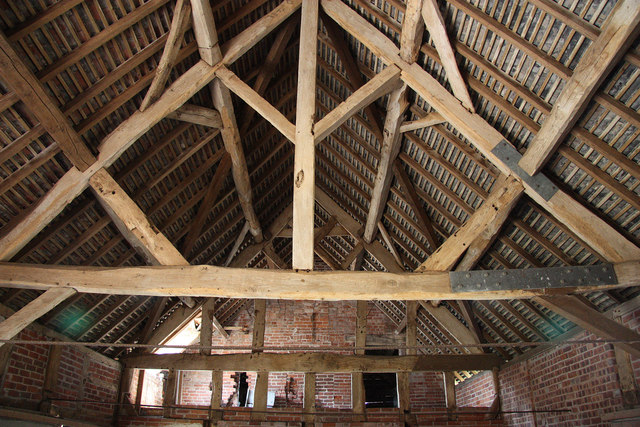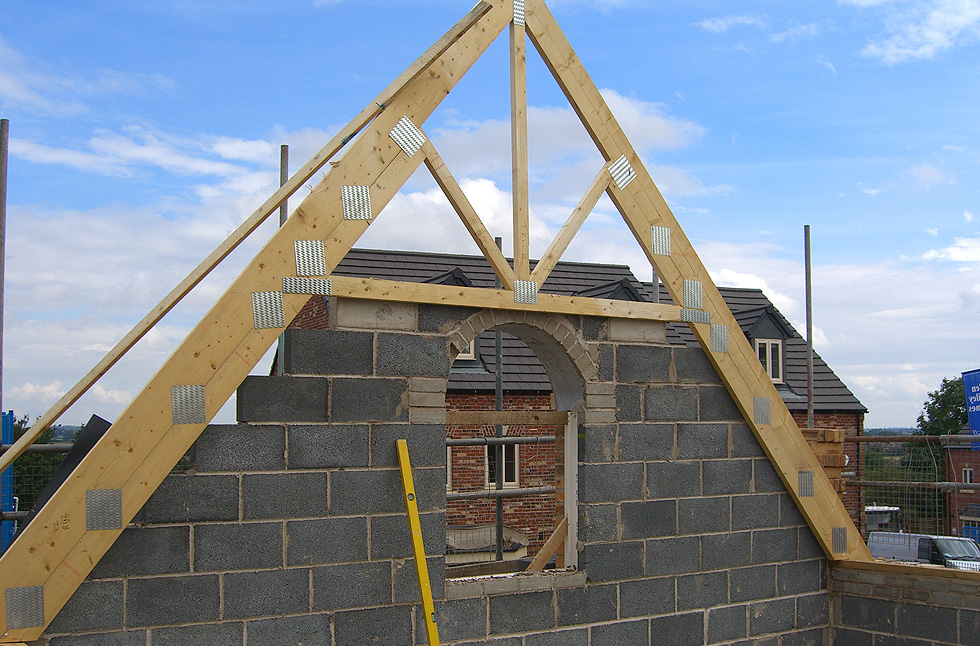A roof truss is a prefabricated structure designed to support a roof on a building. They come in two main types: flat and pitched. Those terms break down into more specific roof truss types. Suitable for all manner of construction projects.
More than likely you’ll see them in a triangular shape, but other shapes do exist. They’re also manufactured off-site and usually lifted into place before securing in place.
So, what does ‘truss’ mean? Well, ‘truss’ refers to the triangular construction of the structure. The structure will often include these triangle shapes in various configurations. Allowing them to fit the pitch, size or design of a roof.
Triangles are very efficient shapes that allow finite control of a load. This is why we use them in construction. They have to support the entire weight of a roof and be strong and stable. Which a triangle most definitely is.
Table of contents
Common types of roof truss
Many different elements go into the making of a roof truss. Each element has a specific name. The exterior frame members are ‘chords’ while the triangle structures are ‘webs’.
Manufacturers can make these two elements in different shapes and sizes. Though this will depend on the requirements of the job.
In roof trusses that have them, there is also the king post. This is vertical support which helps to maintain structural integrity.
Here are some common types of roof trusses:
King Post truss
A king post truss is typically used for short spans. They are often used in extensions, garages, porches and outbuildings. Many old buildings boast open, visible king post trusses.

Queen Post truss
A queen post truss is typically a vertical upright with two triangles on either side. These are not commonly used anymore as they have been succeeded by the Fink truss.
Fink truss
A fink truss is a very common roof truss type with a ‘W’ shape between the chords. It is a very simple but efficient shape and can be used in all manner of projects.
Double Pitch Profile truss
The double-pitch profile truss is used to create different roof pitches, often in commercial buildings but in some homes too.
Mono Pitch Truss
A mono-pitch truss has a single rafter and is a right-angle truss used to form lean-to roofs or single-pitched roofs.
Scissor Truss (also known as Vaulted Truss)
A scissor truss is also used to create vaulted ceilings or more interesting ceiling shapes.
Raised Tie Truss
Raised tie trusses are used to create vaulted ceilings. The lower chord is raised to create a flatter profile for higher ceilings with angled edges.

Do I have to build my own roof truss from scratch?
The short answer is it depends on the size of the project.
Some builders choose to make roof trusses. Others choose to buy them pre-made for delivery on-site, usually on bigger jobs.
Pre-made roof trusses can be manufactured in any shape or size to suit the design. So, for more complex roof designs, such as cantilevers, they’re a good option. They are much quicker to install than to make from scratch. Though there are many debates about whether labour cost or the cost of buying trusses is more expensive than the other.







